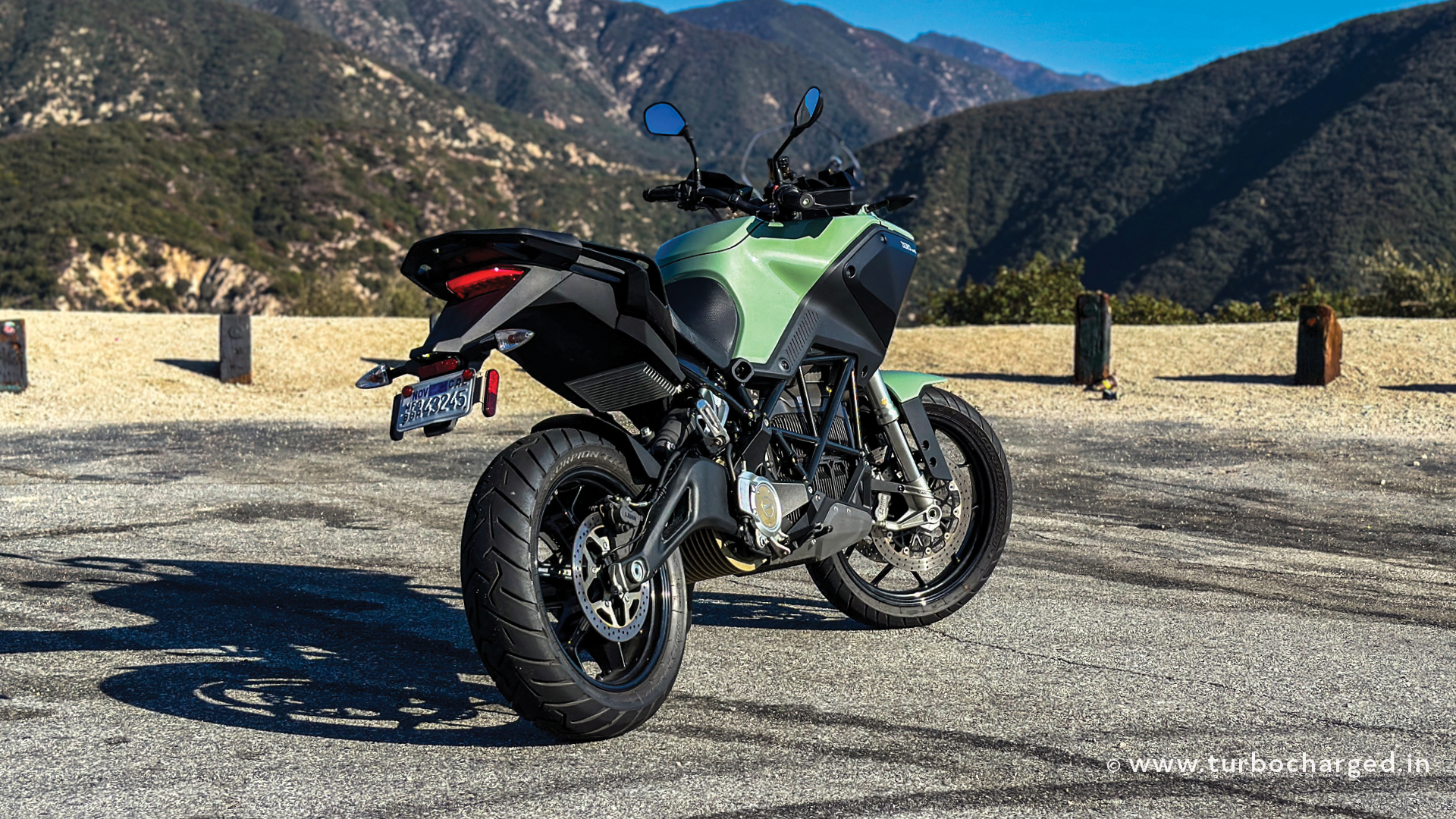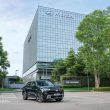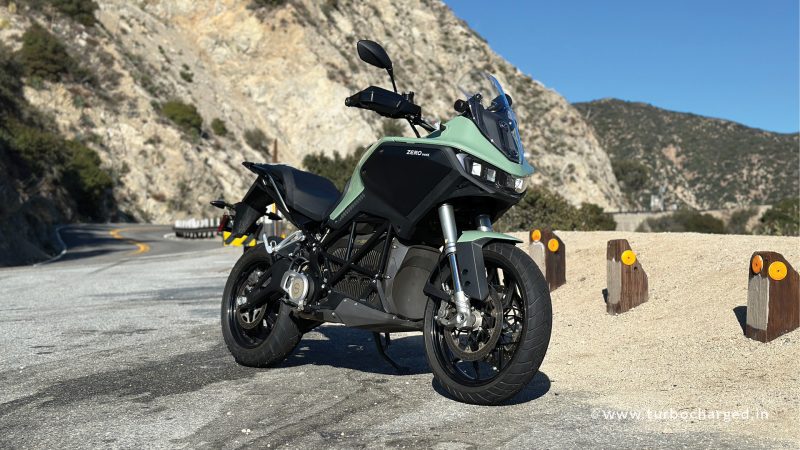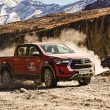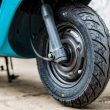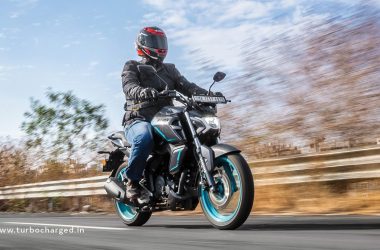The world of electric cars is beginning to look well populated, teeming with everything from matchbox-sized hatchbacks to large sedans, SUVs, sportscars, hypercars, hyper SUVs and whatnot. The motorcycle world though, is the polar opposite. You see, injecting emotion into an electric motor or two, powering four wheels, isn’t a big challenge today. But a motorcycle? I’m not so convinced. No, I’m not going to give you that cliched “Four wheels move the body, two wheels move the soul” line. But admit it, given that big motorcycles are meant to be engaging to ride, when it comes to replacing their petrol engine – be it a single, cylinder, twin, triple or four – with an electric motor, it wouldn’t be easy to replicate the same feel!
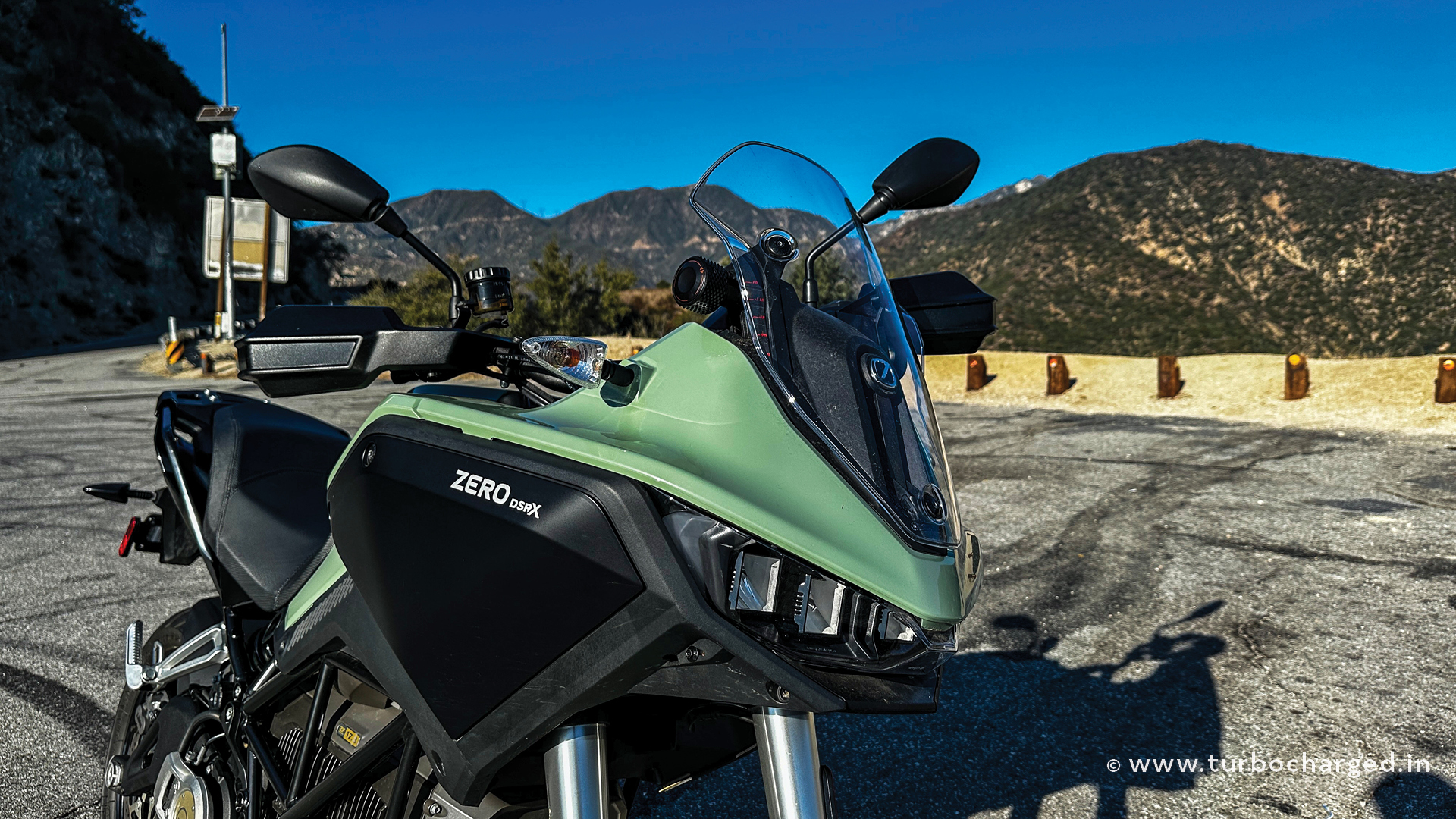
Let’s cut to the chase, fully electric dirt bikes and sportsbikes are available today, but adventure bikes aren’t quite the format you’d think of when thinking of going electric. Adventure bikes are big and heavy as it is and are meant to be ridden to remote places, away from civilisation – places where you won’t find a charging station – so why go electric? But the folks at the California-based Zero Motorcycles think otherwise and came up with the DSR/X. Launched in 2022 the DSR/X was quick to create ripples – it’s the world’s first full-sized electric adventure motorcycle after all. Do you know the bigger news? Hero MotoCorp has made serious investments in Zero Motorcycles, to co-develop premium electric motorcycles. So while I was in Los Angeles, California where Zero is headquartered, it was hard to resist riding the DSR/X to bring you this exclusive review!
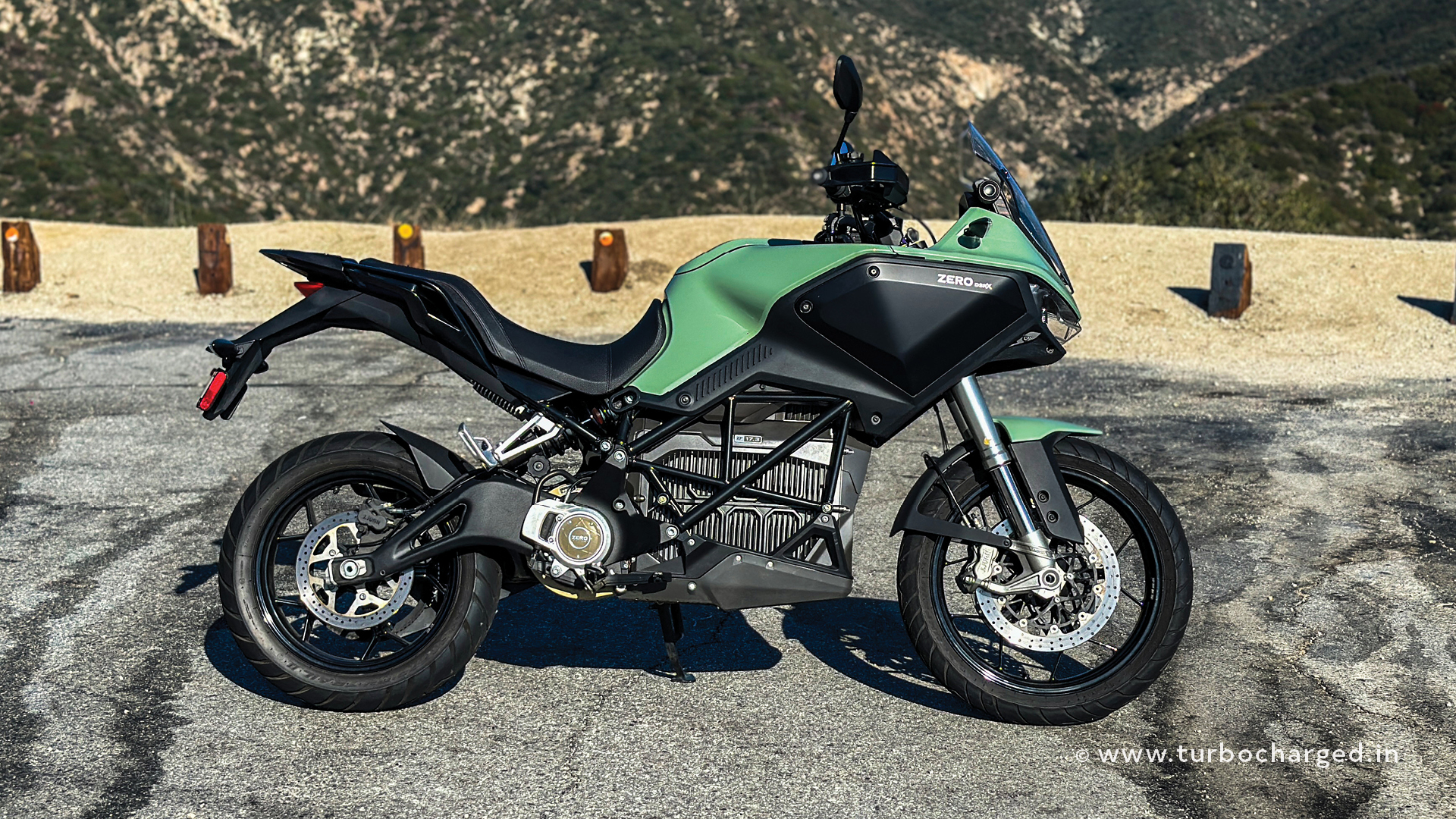
It is big, looks like a conventional adventure tourer and even reminded me of the Ducati Multistrada 1200. It certainly looks good in the flesh, especially since attention to detail is excellent. A set of fat, 47mm upside down forks from Showa (fully adjustable) hold the 19-inch front wheel (my bike was running alloys, though you can spec it with spoked rims), while a half-fairing houses a set of four square-shaped LED beams (two for high beam). The windscreen is height adjustable via knurl-finished rotors, while the ‘tank’ houses the charging port and a lockable storage box, followed up with a stepped one piece seat that leads onto a small luggage rack. Seat height is 828mm, though you can opt for shorter or taller accessory seats.
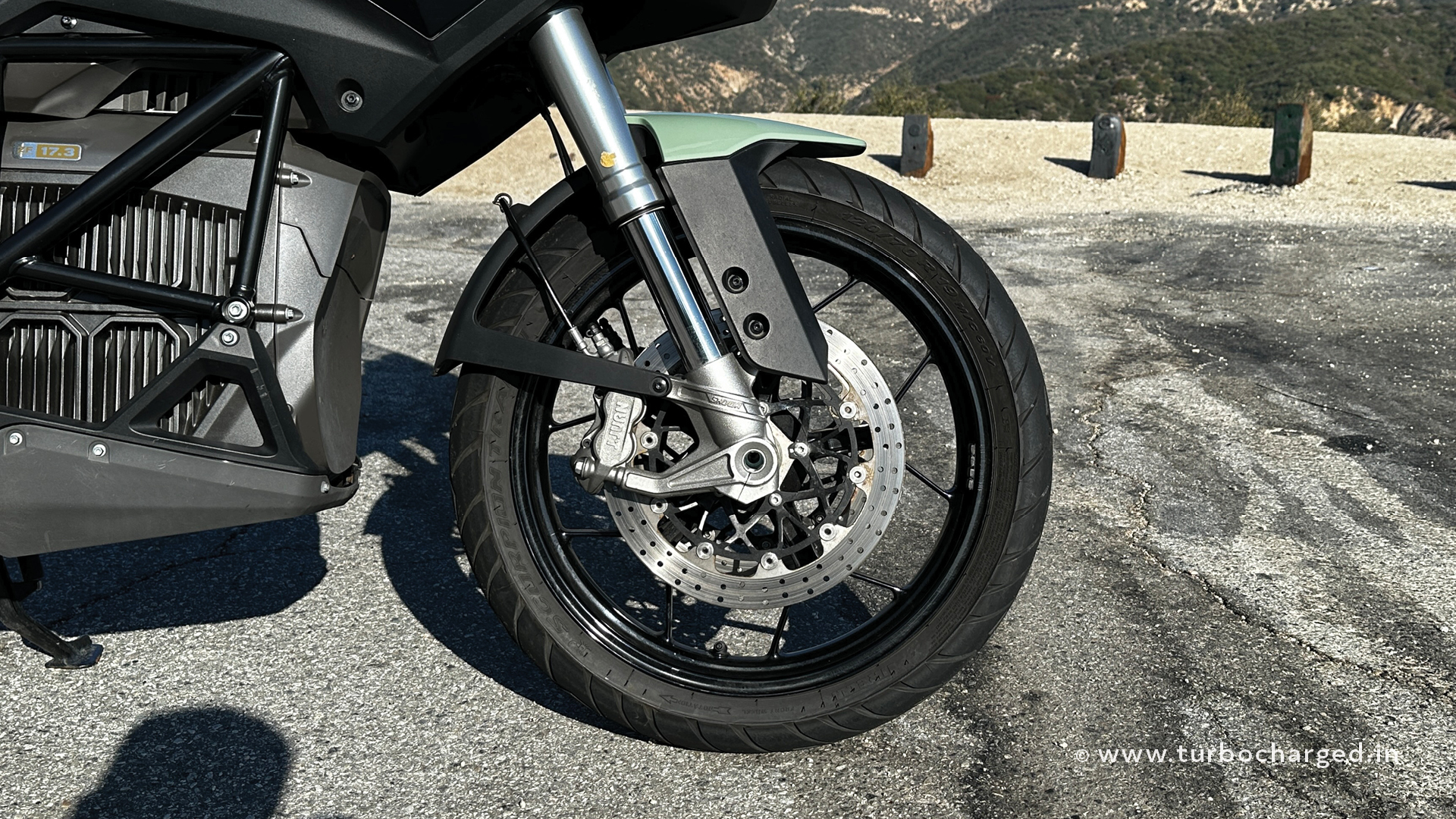
The rear end is a simple affair and the double-sided swingarm holds a 17-inch wheel, shod with a 170/60-section tyre, suspended by a Showa monoshock, without linkage. Suspension travel at both ends is 190mm. Braking duties are taken care of by a J.Juan (Spanish brand owned by Brembo) setup including dual 320mm discs upfront and you even get combined braking and an off-road mode. The coloured instrument cluster display offers good visibility even in harsh light and packs in a lot of information, and sits flanked by a 12V socket. Quality of plastics on the switchgear could have been better but paint sheen and overall fit-finish levels are premium.
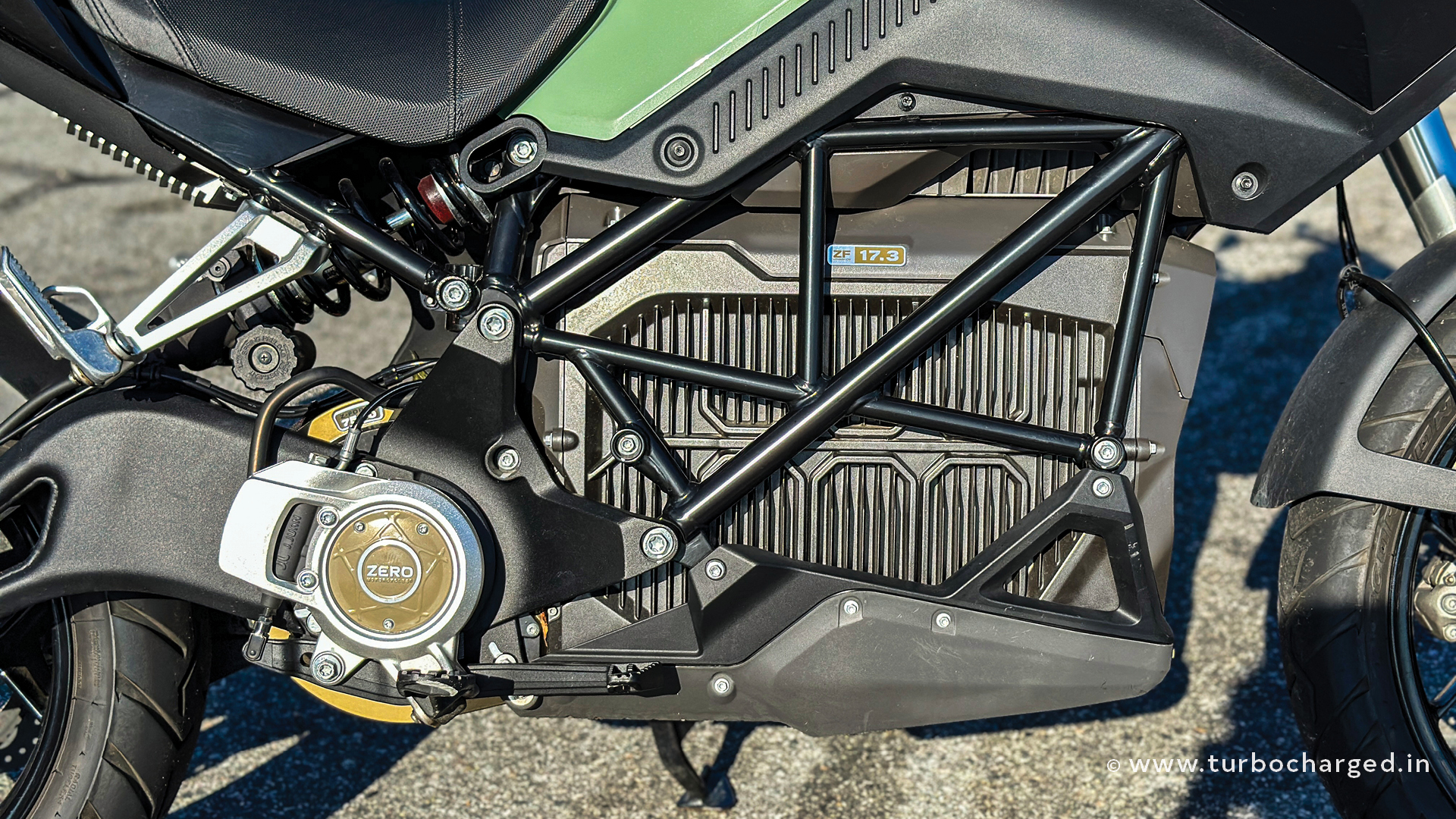
You can’t tell this isn’t a regular ADV until you look through the trellis frame that houses what is the biggest battery on a production two-wheeler, rated at 17.3kWh. At 179 miles (288km) per charge, Zero’s claimed range sounds in line with the tank range for a big adventure tourer but that’s in city, at highway speeds Zero claims the range will drop to about 100 miles (160km) per charge, which is a little worrisome. Especially, if you’re planning to go on an adventure because in India at least, that means remote places where charging could be a big concern. That said, a 6kW fast charger will juice the bike up to 95 percent in just over an hour, while the standard charger will take a shade under 3 hours for a full charge which isn’t bad.
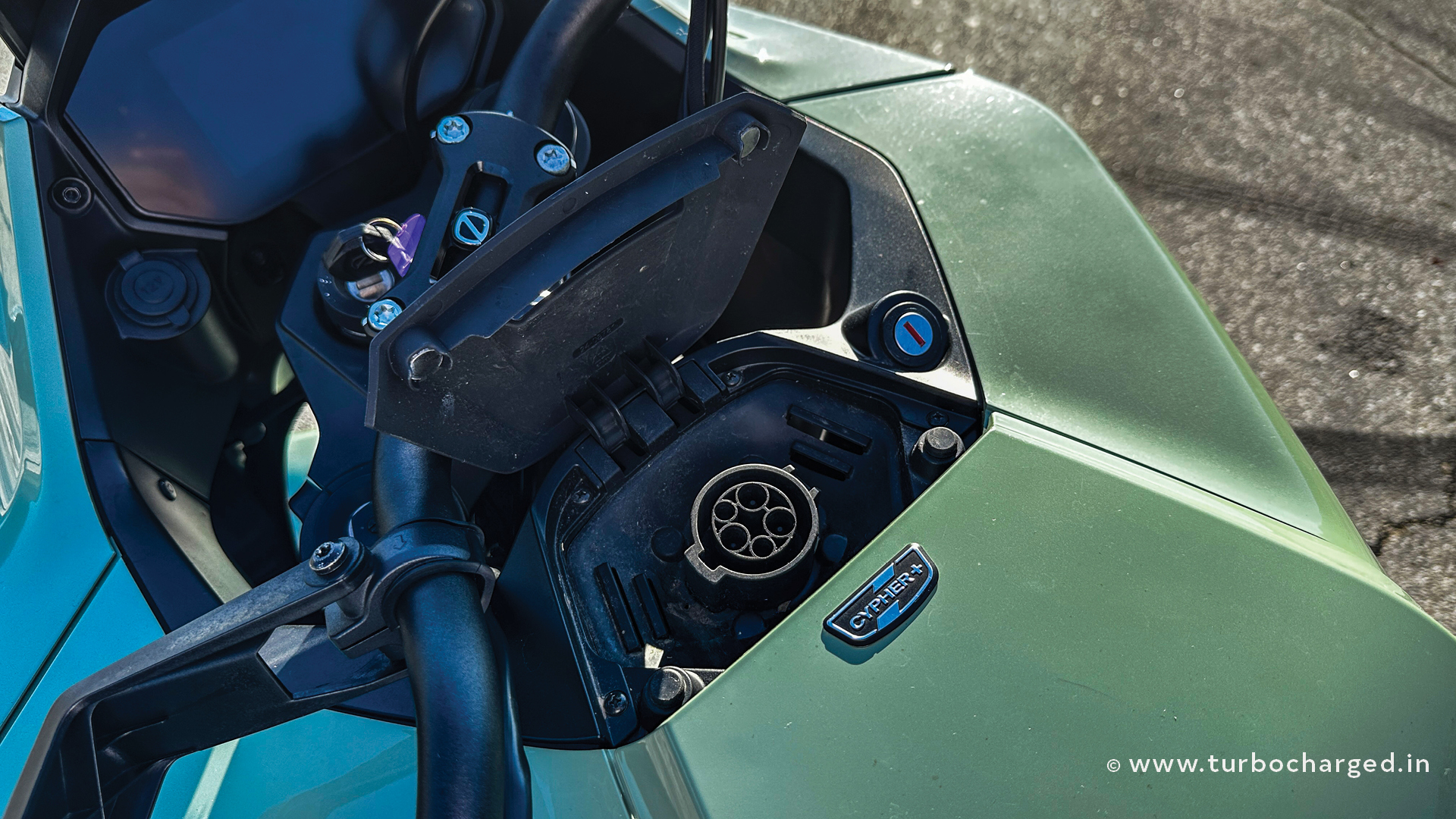
You can add another 3kWh via what Zero calls a ‘power tank’, an additional battery that will occupy the tank’s storage box. The motor puts out 102PS which is comparable to the Honda Africa Twin but a far cry from segment leaders like the BMW GS 1300 R and Ducati Multistrada V4. That said, peak torque is 229Nm, a number pretty much every production motorcycle on the planet cannot match. Electronics include five customisable riding modes including an off-road mode with reduced traction control and ABS intervention, hill hold (which works brilliantly considering there’s no clutch or gears), besides a dedicated smartphone app. Electric bike throttles usually feel vague and its either on or off, but that’s not the case with the Zero as it impresses with its progressive throttle.
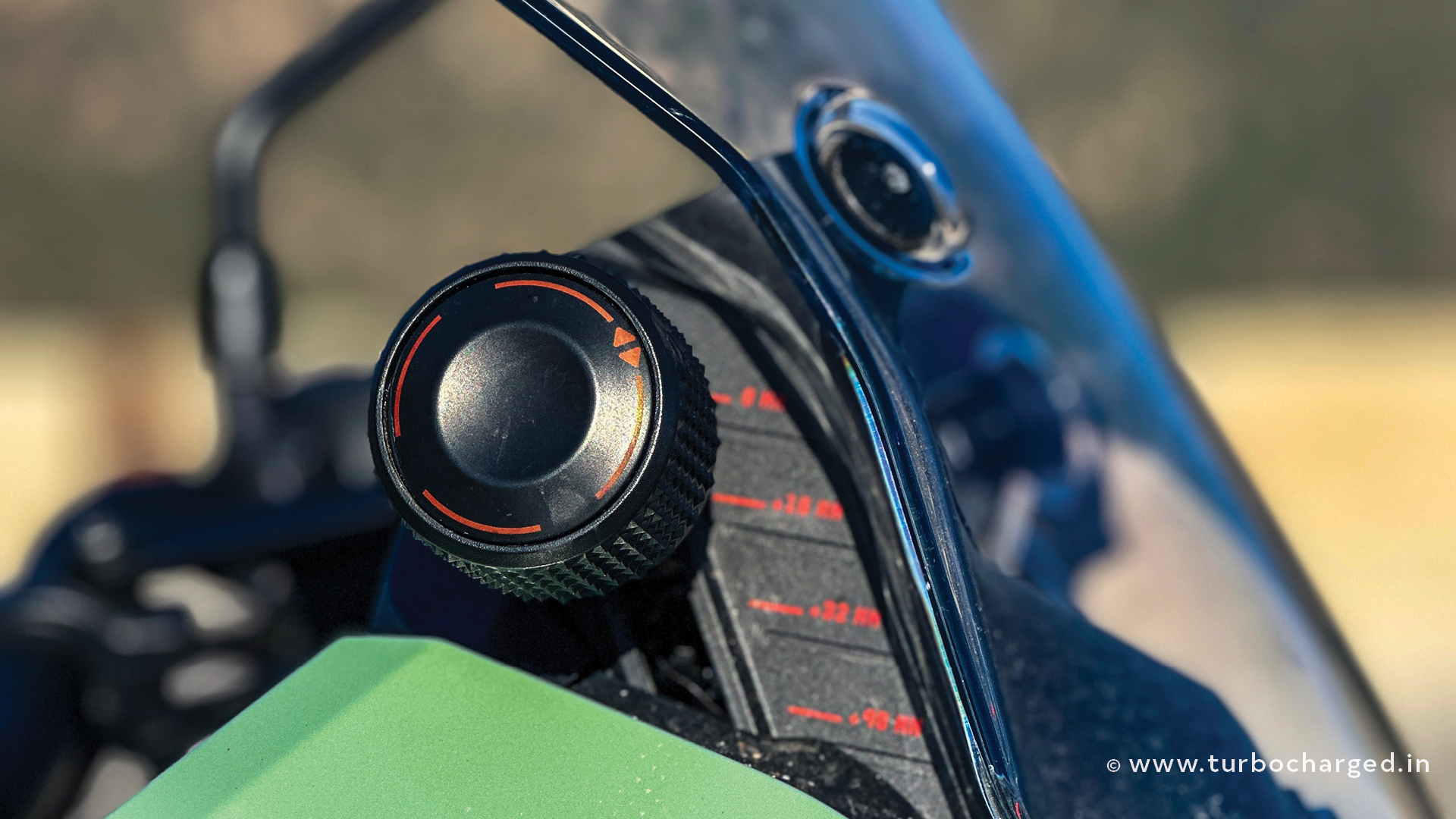
The final belt drive goes well with the quietness of the electric powertrain, but I’m curious about durability, especially if you ride off-road or in slush regularly. Acceleration is quick, be it off the line, accelerating out of corners or while overtaking but even more impressive is how smooth power delivery is, something that’s not common in the EV world yet. I even managed a couple of full bore launches and the surge is consistent, though obviously, I wasn’t able to go too fast given the speed limits around LA. It wouldn’t be fair to compare an electric to a petrol motorcycle, but while performance isn’t anywhere close to a Multistrada V4, it is certainly comparable to say, the Triumph Tiger 900, and the DSR/X pulls strongly well past 150kmph too.
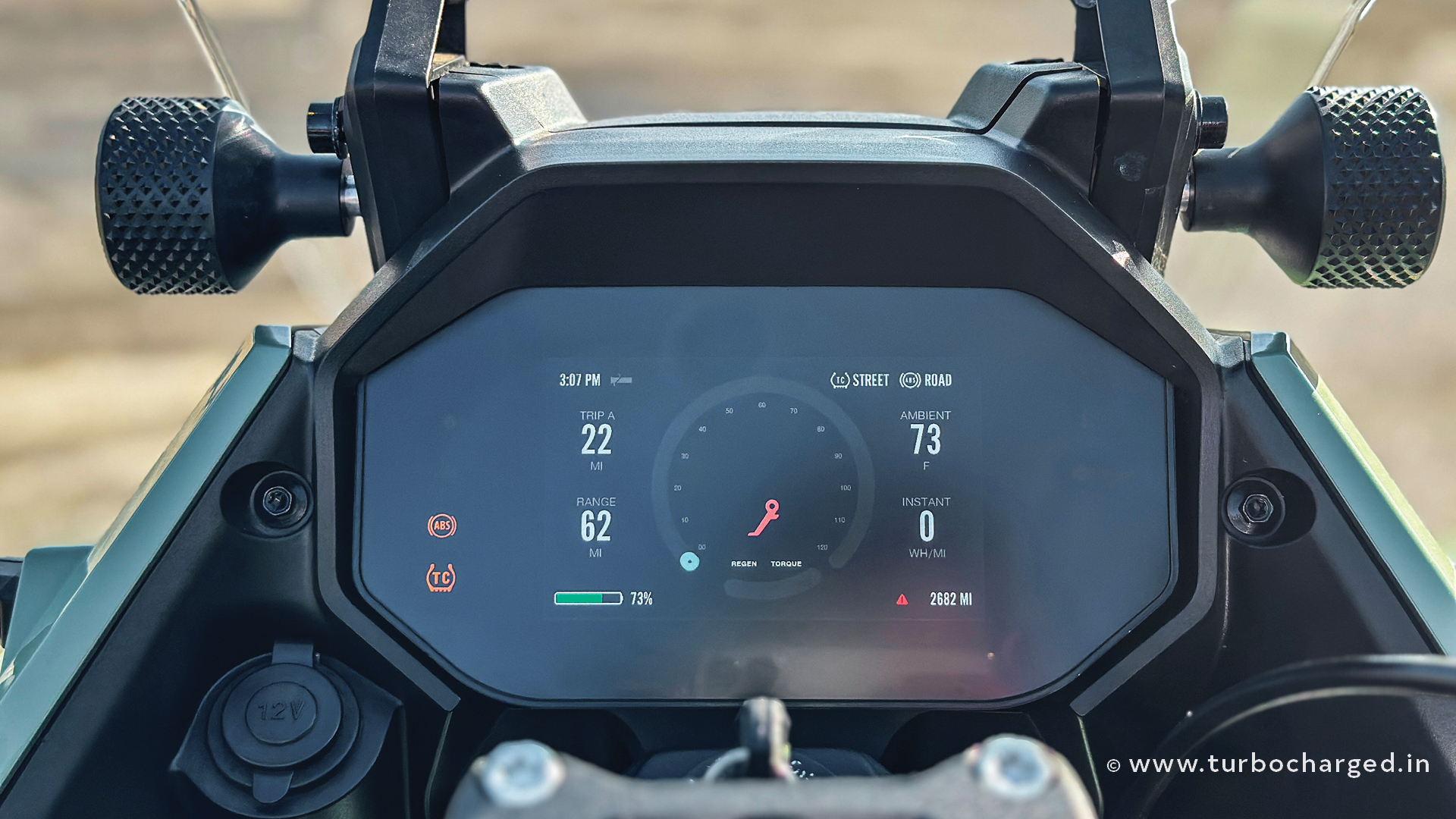
I rode the DSR/X on Freeways and also in the hills leading to the Angeles Crest Highway and the bike munches miles feverishly. It’s a little disconcerting to ride an ‘automatic’ full-sized ADV but you get used to it. The DSR/X feels like an adventure tourer should, and there’s a lot to like about the bike. It feels comfortable, seating is upright and the seat is well-cushioned, making the DSR/X ideal for long rides. I would have liked to go on a longer ride and get more seat time and even try it off-road, but I only had a few hours with the bike, that too on tarmac as I was all by myself. Overall, initial impressions about the bike are quite positive.

It’s highly unlikely the DSR/X will come to India, anytime soon at least. We do know Hero MotoCorp is going to be co-developing electric bikes with Zero but those will most likely be smaller machines. Having ridden the DSR/X I’ve got to admit, an electric adventure tourer is an interesting concept, though it comes with the caveat of charging. And the battery pack on the DSR/X is pretty large already, so the only way forward for longer range is a more energy-dense battery. The idea of an adventure tourer is to head away from urban jungles and closer to nature, but an electric one might just force you to stay close to civilisation. That said, a bike like the DSR/X make a lot of sense for highway touring and cross country rides, something I would like to try.
